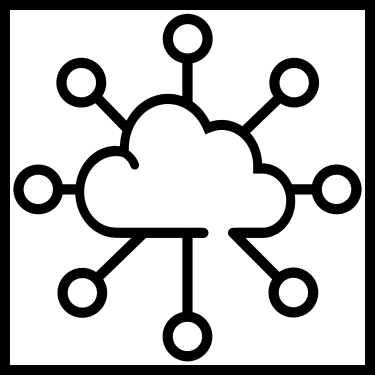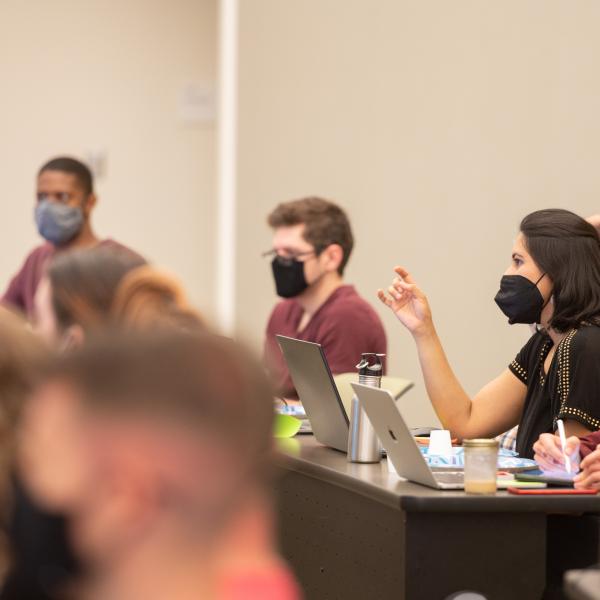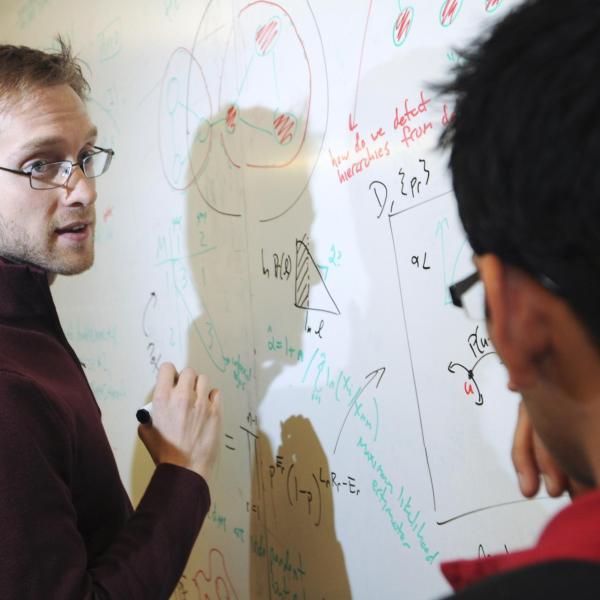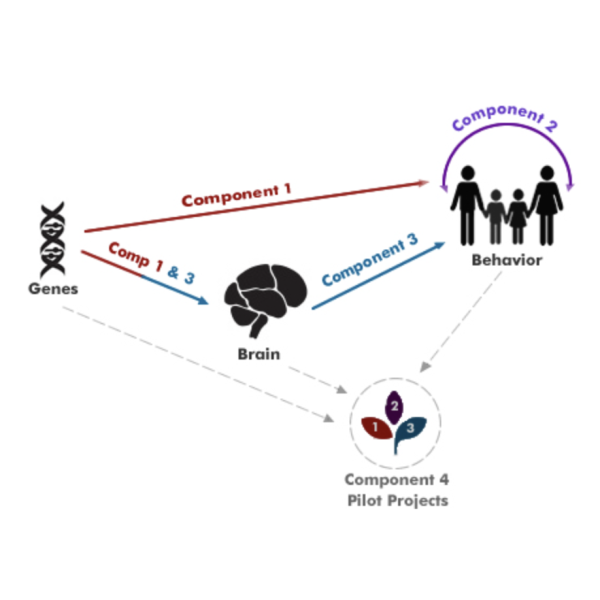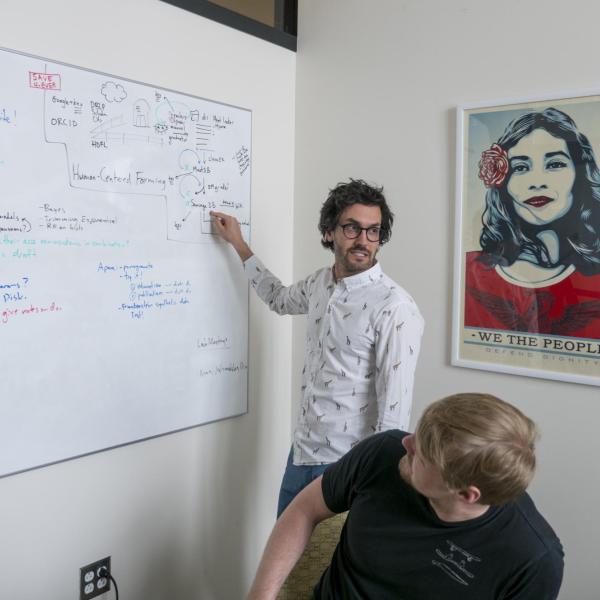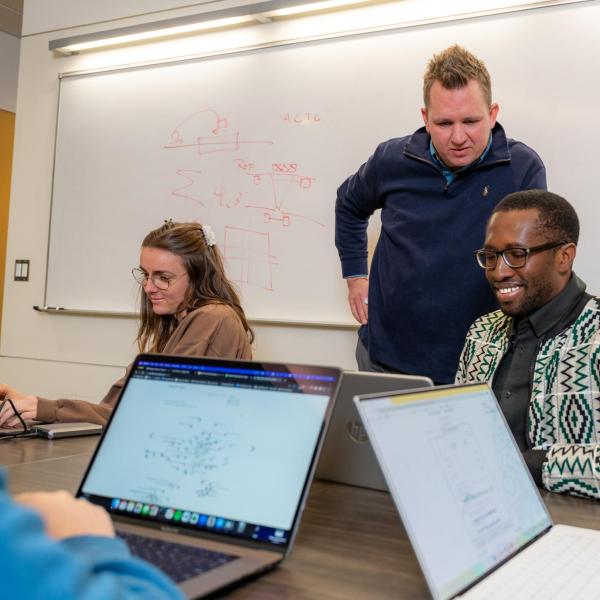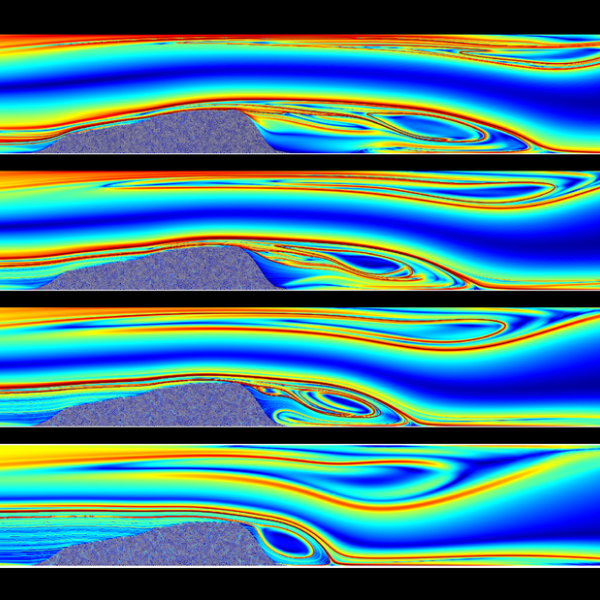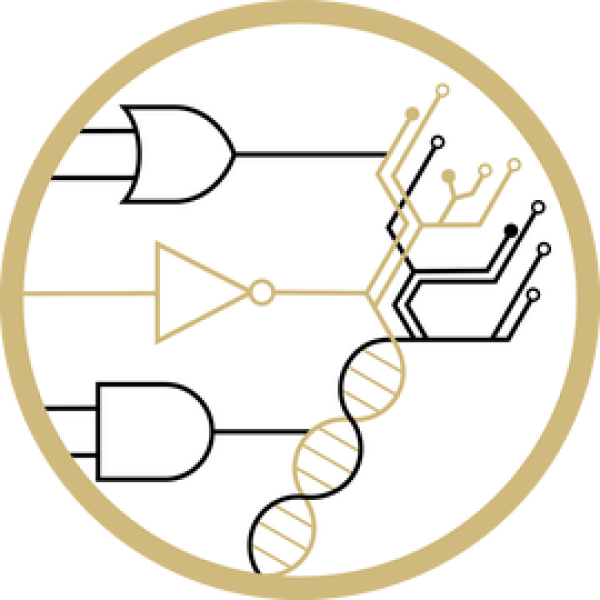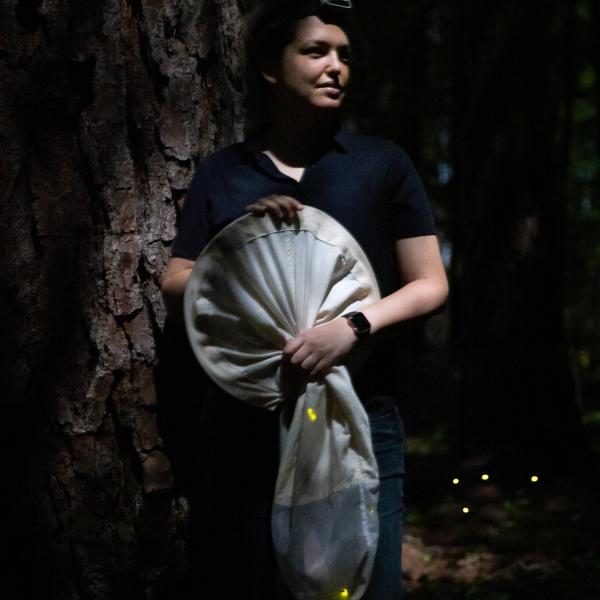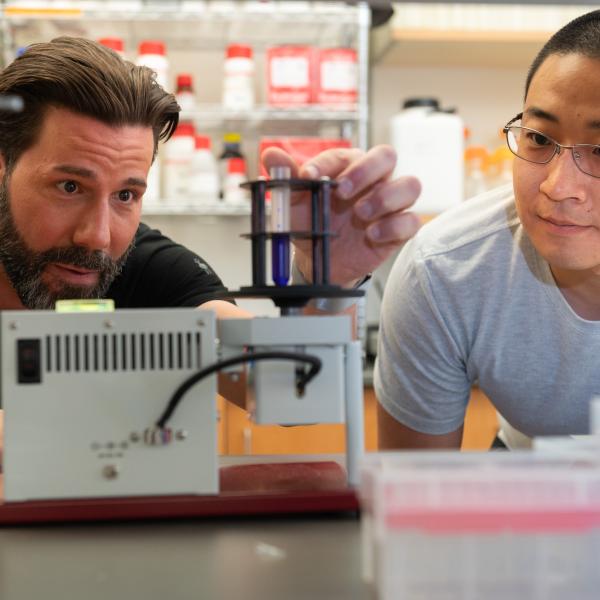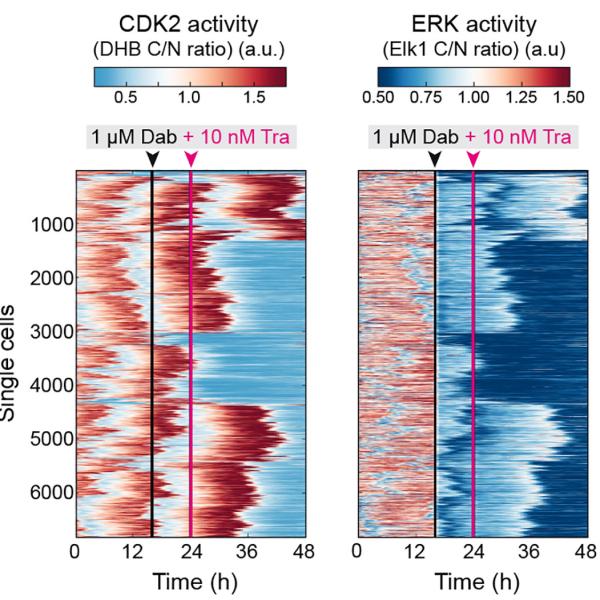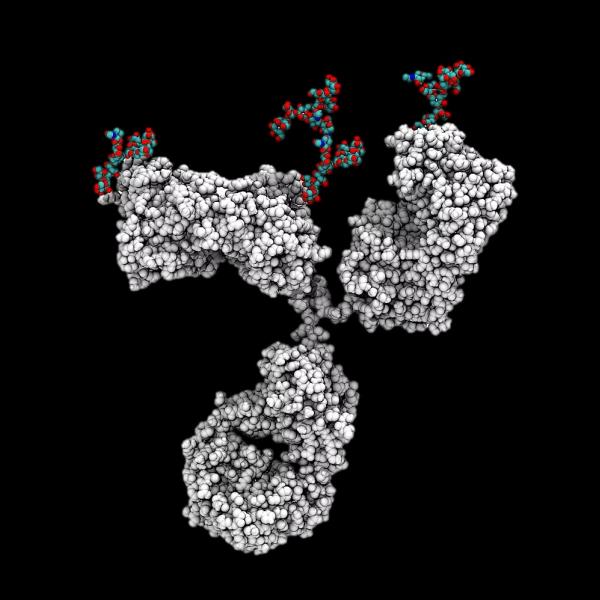Computational Biology
Labs studying Computational Biology
Alistar Lab
The Alistar Living Matter Lab is dedicated to making healthcare more affordable, effective, and personal. They design digital microfluidic biochips that enable people to directly interact with their microbiomes and bring diagnostics out of the lab and into the home.
Allen Lab
The Allen Lab is focused on deciphering meaning in an individual person’s genome and how person-to-person DNA sequence variability contributes to personal traits, ultimately enabling personalized medicine. They devote special effort to understanding how conditions associated with Down syndrome arise from the extra copy of chromosome 21.
Chuong Lab
The Chuong Lab investigates the evolution and function of gene regulatory networks, or the choreography of gene activity in response to specific cues. They are particularly interested in virus-derived “DNA parasites” that have been co-opted by human genomes over evolutionary time and are responsible for biological landmarks such as the placenta and human-specific immune system traits.
Clauset Lab
The Clauset Lab uses network science to study how small-scale interactions drive large scale patterns in complex social and biological systems. Further, they apply machine learning to infer causality or make predictions in diverse problems such as body size evolution, terrorist network activity, and the social hierarchies and inequities in scientific ecosystems, or the science of science.
Donaldson Lab
The Donaldson Lab studies the mechanistic basis for individual differences in behavior and how these impact the likelihood to develop mental illness. They use prairie voles, mice, and post-mortem human tissue in advanced neurogenetic and circuit-level analysis to better understand how genes and environment shape who we are.
Dowell Lab
The Dowell Lab investigates transcriptional regulation through a combination of genetics and biologically informed machine learning approaches. They have developed techniques to interrogate the initial stages of RNA synthesis and dissect the role of the functional RNAs known as enhancer RNAs (“eRNAs”). They apply these tools to understand cells with abnormal chromosome numbers, such as trisomy 21 (causing Down syndrome), many cancers, and liver regeneration.
Kissler Lab
The Kissler Lab seeks to make the world more resilient to infectious diseases by studying how pathogens interact; how our bodies, communities, and societies respond to infection; and how epidemics compound other major threats to our well-being using the latest data, statistics, and computational methods.
Krauter Lab
The Krauter Lab probes the relationship between human microbial populations and human development and disease. They combine genetic analyses, environmental assessments and high-throughput DNA sequence classification of microbes in the mouth and gut to examine how microbes may respond to and be responsible for normal and disease states.
Larremore Lab
The Larremore Lab develops computational methods and mathematical models rooted in network science, dynamical systems, and statistical inferences and applies them to real-world problems spanning infectious diseases and social sciences. Their work has been used globally to inform on critical public health policies.
Layer Lab
The Layer Lab studies the ways in which genetic variation affects human health by developing computational genomics tools to analyze population-scale datasets. They are particularly interested in large chromosomal rearrangements (or, structural mutations) and uncovering how those contribute to the spectrum of normal human variation across global populations and which of those are causal factors in cancers.
Mukherjee Lab
The Mukherjee Lab investigates the flow, transport, and mechanical underpinnings of physiological processes and develops tools for disease biomechanics, medical device design, treatment planning, and drug delivery. A primary application area is in cardiovascular and cerebrovascular processes in healthy and diseased states, like stroke, thrombosis, and embolisms.
Myers Lab
The Myers Genetic Logic Lab engages in interdisciplinary synthetic biology work in the overlap between electrical engineering, mathematical modelling, and genetic biology. Examples include: creating genetic design automation programs similar to automation design programs for electronic circuits, stochastic verification of genetic models, and a repository for storing and sharing genetic constructs.
Olm Lab
The Olm Lab is uncovering why immune diseases such as allergies and type I diabetes are so prevalent in industrialized societies by integrating computational biology and immunology to study the infant gut microbiome.
Peleg Lab
The Peleg Lab investigates how organisms or super-organism communities buffer themselves against large environmental fluctuations and adapt over a wide range of length and time scales. They combine computation, physics, engineering, mathematics, and biology and look to natural populations such as fireflies and honey bees for bioinspired technological solutions to infrastructure problems, including communications, robotics, and structural engineering.
Rinn Lab
The Rinn Lab examines the mechanisms through which the class of functional RNAs known as long noncoding RNAs (lncRNAs) regulate essential biological processes. Thousands of lncRNAs exist, but only a handful are functionally understood. They combine computational and experimental sciences and develop new RNA-based tools when none exist for studying this unique category of molecules.
Spencer Lab
The Spencer Lab investigates cell signaling mechanisms to understand how these signals go awry in cancer with the goal of altering the fate of individual cells. They study single cells, which display remarkable variability in these processes within a genetically identical cellular population, using fluorescent sensors they developed in long-term live-cell microscopy and cell tracking experiments to quantify signaling dynamics controlling cell fate.
Sprenger Lab
The Sprenger Rationally Designed Immunotherapeutics & Interfaces (RDI) Research Group employs modern computational techniques to tackle big problems, from infectious diseases to climate change. This includes molecular simulation, mathematical modeling, and machine learning techniques to describe complex interfacial phenomena, such as pathogen-antibody (for vaccine design) and small molecule-cell membrane (for treating brain-based diseases).


